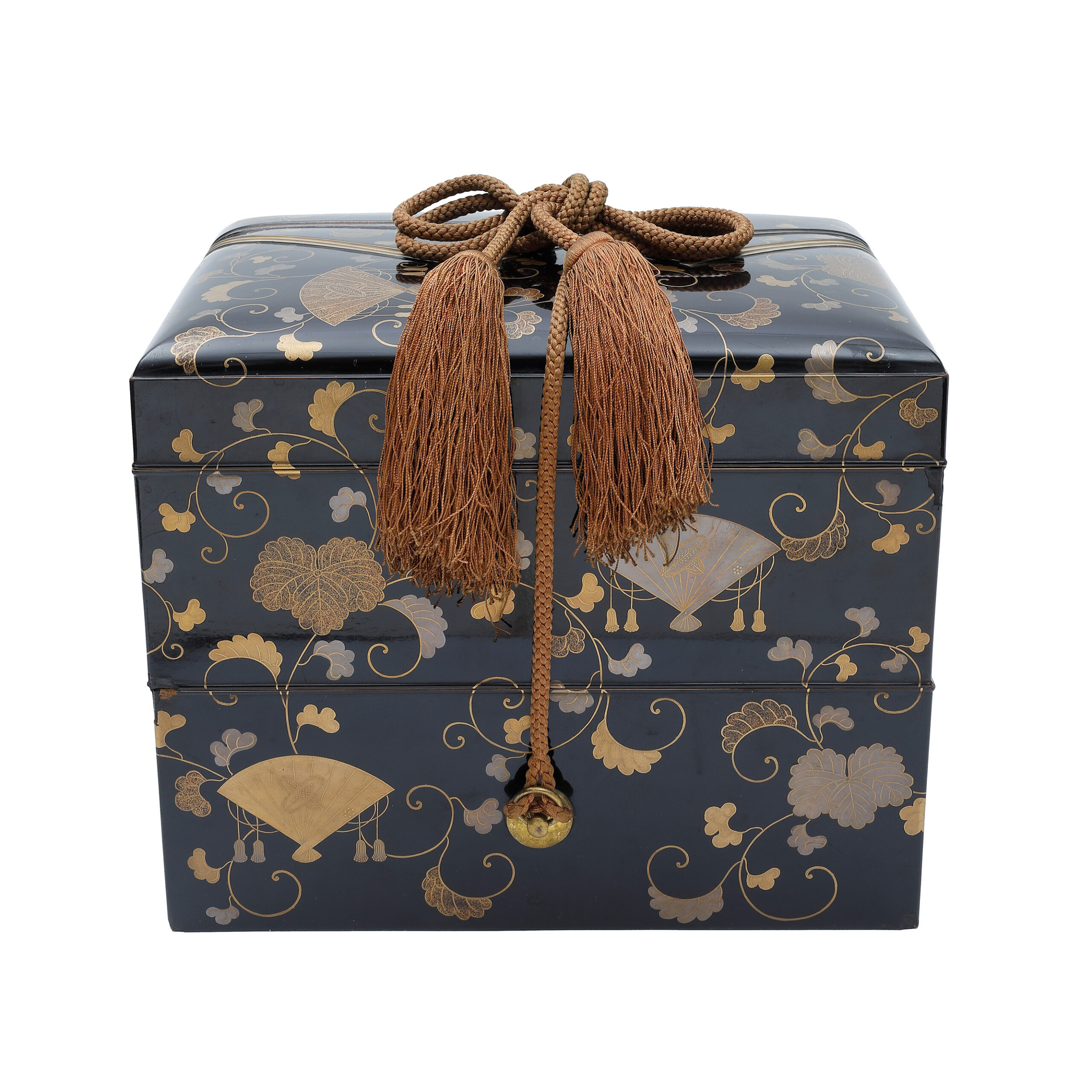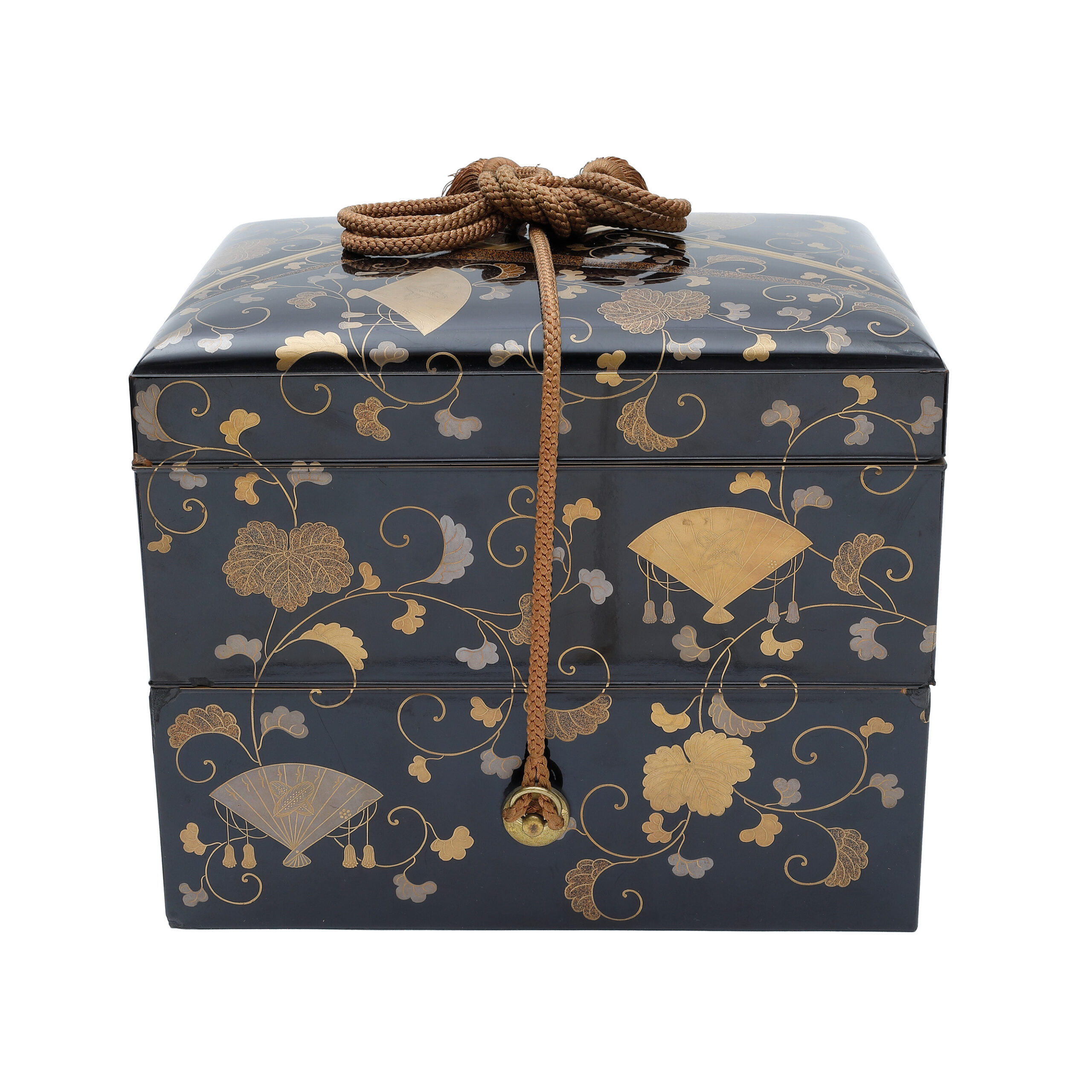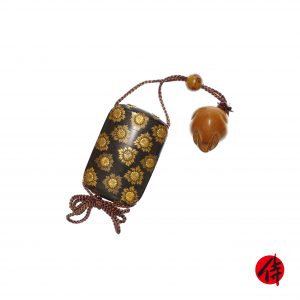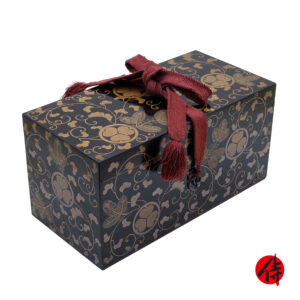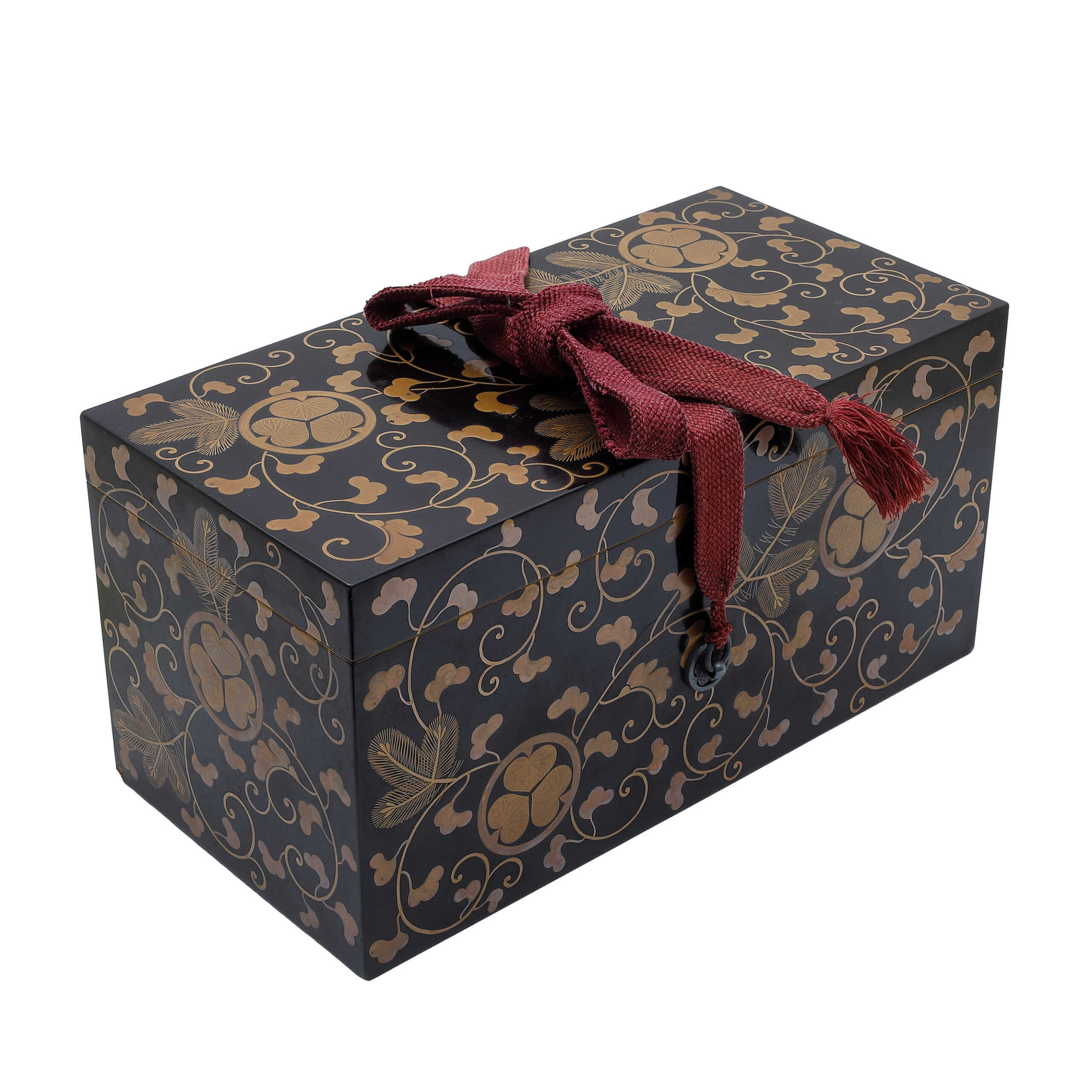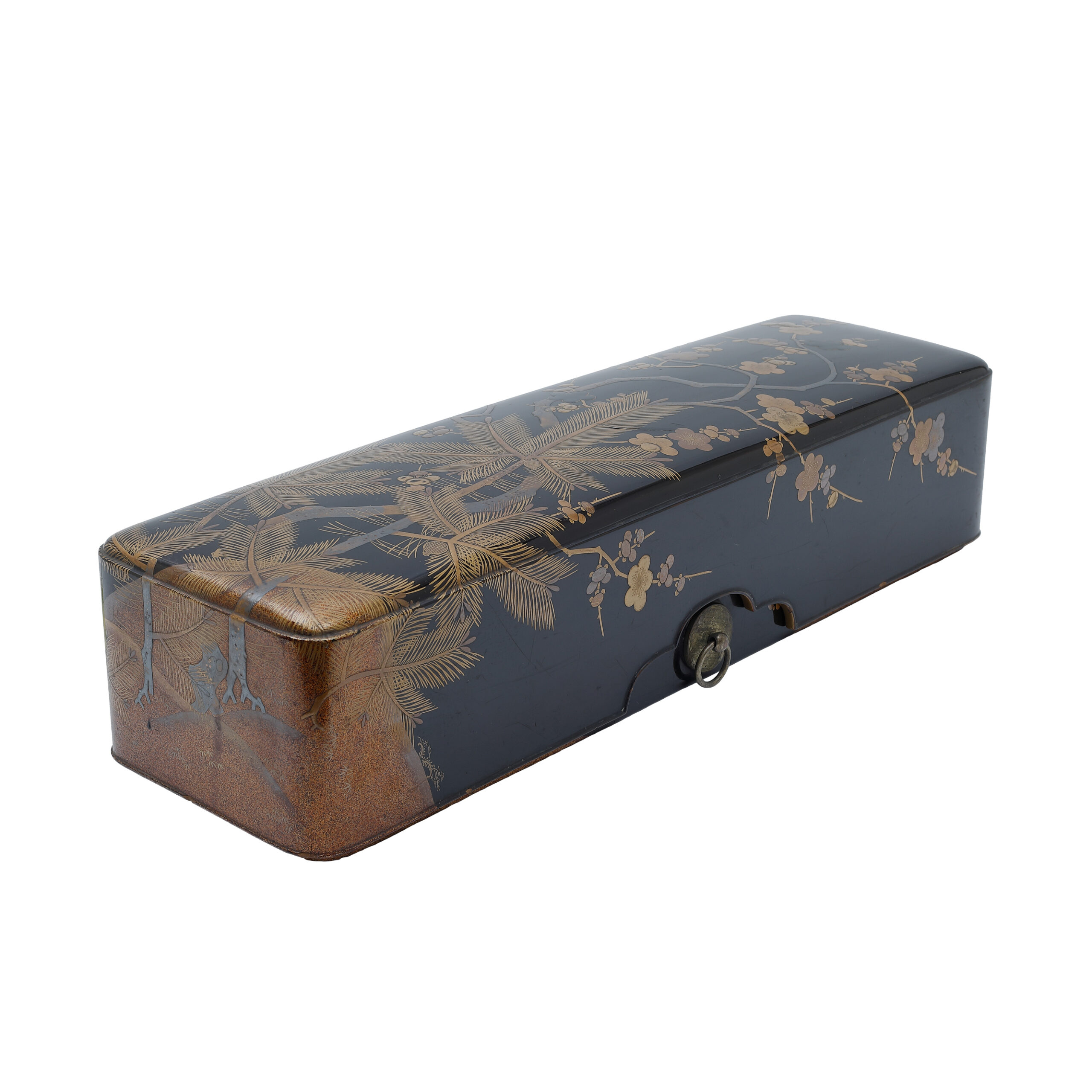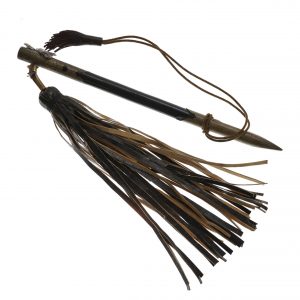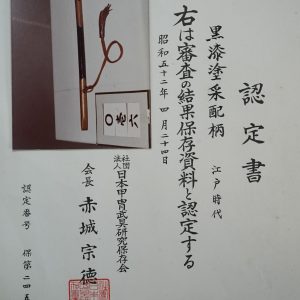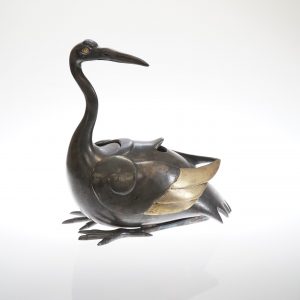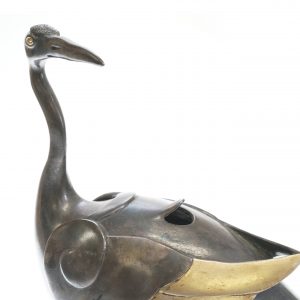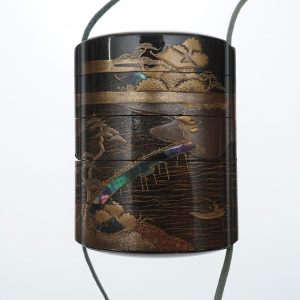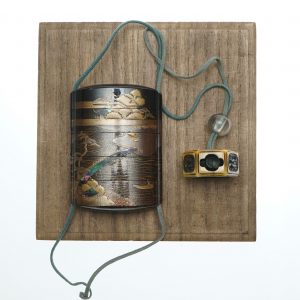Title: Japanese wooden lacquer box-Bunko Nogiku Zu
Description
A Bunko (文庫) is a type of box, and it is also called the Bunko Bako (文庫箱). It has been used to store books, personal belongings, or valuables. Since ancient times, Japanese people have customarily put essential things in boxes. And they developed various techniques to decorate packages.
This box has a rectangular shape, and its entire surface is decorated with ornate plant and fan designs. The wood material is coated with elegant black lacquer, and these motifs are depicted with the Makie (蒔絵) technique. The Makie is a typical Japanese lacquer art technique developed uniquely in Japan for about 1,200 years. Firstly, it needs to draw a picture with lacquer on the surface with a thin brush. Next, sprinkle the gold powder from above to show the pattern before the lacquer hardens. This technique makes a gorgeous and elegant look to works, as seen on this Bunko box.
Firstly, you would realize the Karakusa (唐草, arabesque) pattern cover the entire of this box. It is a design in which vine stems and leaves are twined and make curves. Since ivy has a strong vitality and grows up without interruption, people regarded this design as a symbol of prosperity and longevity. Vine is called the Tsuru (蔓) in Japanese, and it has another pronunciation; “Man.” There is a word 万 (it is also read Man), which means ten thousand. In the Karakusa pattern, leaves and vines are connected like Obi (帯, belt). The word “帯” can also be read “Tai.” Due to its pronunciation, the term “代 (Tai)” is associated. From this word-association game, an idiom 万代 is associated, and it means a thousand generations. In other words, we could imagine that people used this design wishing prosperity and longevity for their clans for a long time.
Next, we would like to mention other two motifs: Ougi (扇, fan) and Tsuta (蔦, ivy). The same as the Karakusa pattern, these are also good-luck designs. The fan motifs have been favored as auspicious patterns representing development and prosperity. During the Heian period (794-1185/1192), aristocrats enjoyed elegant plays with fans, and they appreciated the fan itself as a noble item. A fan has a characteristic shape, and it is called Suehirogari (末広がり) in Japanese. Based on the idea that this shape implies a perspective of the future, people appreciate this design. The fan pattern also represents wealth because it was once available only for high-ranked people. The Tsuta pattern is quite similar to the leaves part of the Kiri (桐, paulownia) pattern. It has yellow flowers in summer and red leaves in autumn, giving it a beautiful appearance. Therefore, it has been loved as an ornamental plant since ancient times. Due to its aesthetic significance and lush nature, it has come to be used as a family crest to pray for prosperity and was especially often used by Samurai families.
This Bunko would be fit to store letters, documents, and other small items. You could also display it to enjoy as one of the interior decorations in your room.
*As this item is an antique, please check each photo and ensure its condition.
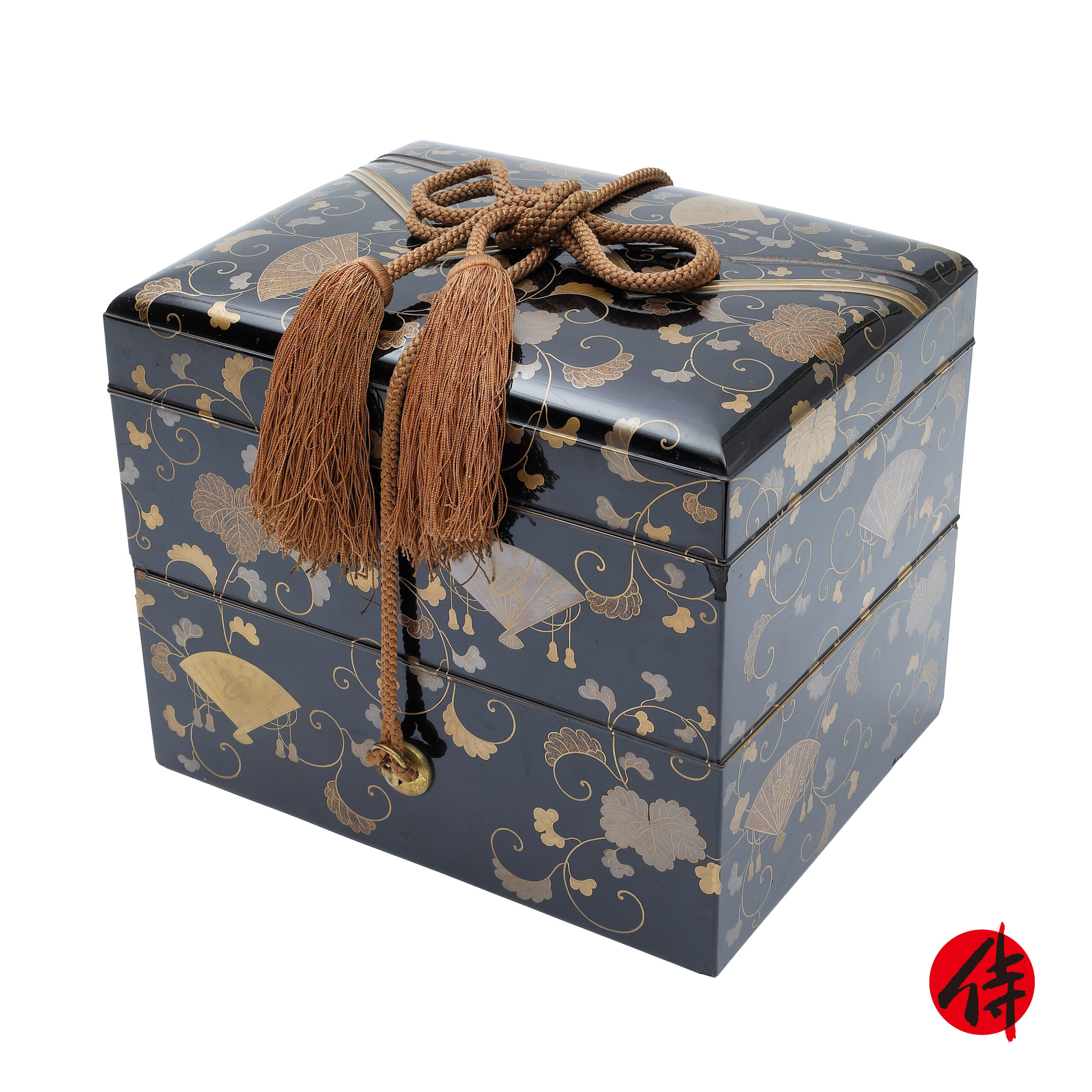

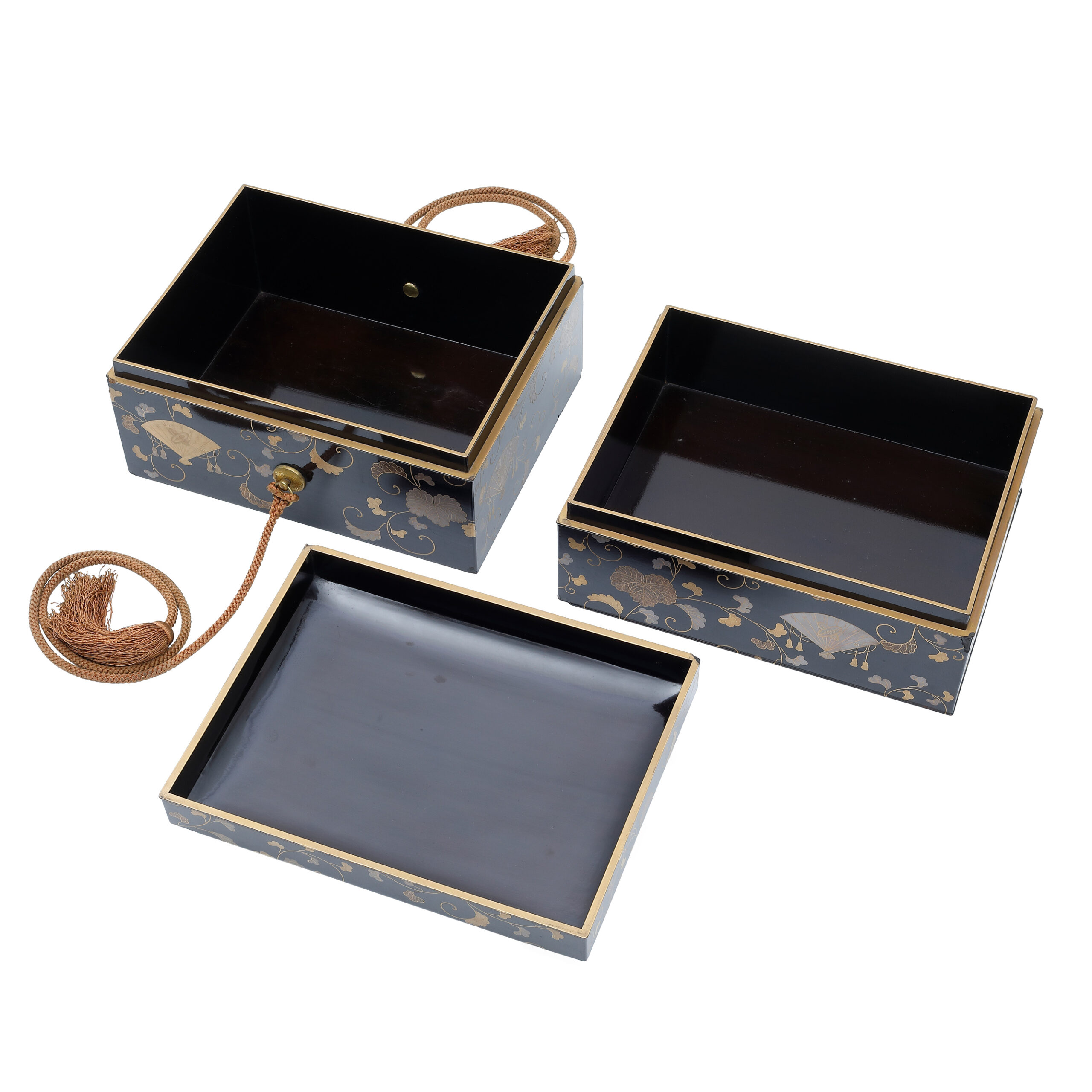
【About us】
Samurai Museum is located in Tokyo, Japan, exhibiting antique artifacts related to the Samurai history. Samurai Museum Shop is the place for those who are interested in Japanese culture and craftsmanship. We deal with antique Samurai swords/armor, traditional crafts made in Japan and so on.
【Payment method】
We accept payment through Stripe (Credit card), PayPal, Apple Pay or ChromePay, all of which are secure payment methods. Also, you don’t need to make an account on Stripe for the checkout. If you prefer other payment method, please contact us. You may either pay in JPY, USD, AUD, CAD, EUR, CHF or GBP. The price is set in Japanese Yen. Prices in other currencies are automatically calculated based on the latest exchange rate.

【Shipping duration】
We normally ship via EMS (Express Mail Service) provided by Japan Post. It usually takes at least 5-14 days to deliver the package after you place an order. Time of delivery is estimated as accurately as possible by the carrier but does not take into account any delays beyond our control such as by inclement weather, post office holiday seasons.
We offer Free International Shipping as long as we can ship your order by EMS. If you prefer other shipping carriers, please contact us.
We will inform you of the order’s tracking number via email. Please make sure you fill out your valid email address correctly.
*Please keep in mind that due to the spread of COVID-19, there might be possible delays in delivery. If you like to make sure if EMS shipping is available to your country, please contact us.

【How to make sure the condition】
Please keep in mind that what you are going to purchase is an antique item. We uploaded high resolution photos for you to check its condition thoroughly. If you like to see more photos with different angles, please feel free to contact us. We will be happy to send them to you so that you can make informed decision.
It is essential for us to know that you are happy with your choice of Bunko and we are prepared to use the best of our ability to serve you.
Would you like see some more antique items for sale? Please check the link below. We hope you can find your favorite item.
https://www.samuraimuseum.jp/shop/product-category/antique/
